I’m a writer. I’ve
spent hours writing letters of recommendation for students, writing grants, and
articles relevant to teaching, learning and community development. You could say I’ve written grants to pay my
way.
You could say I’ve written letters to assist students to
survive. I mean this literally – about
survival. In the case of one former
student, my letter to document that he was an emancipated minor, a good student
invested in his education provided documentation to attain loans.
There are many stories.
I write best when I write as though I’m there, talking to you in person,
and you are willing to listen. Typically
my ability to share thoughts on paper is sought by students and members of the
community. Yet there are times when I’ve
felt unsafe to write, because I’m telling an alternative story.
While I listened to information about our college’s financial
stability, I looked out to staff, faculty and administrators and felt the backstories. Backstories included our families we hope to
continue to provide for, children and grandchildren we expect to continue to
care for, our many community obligations and responsibilities we commit to
uphold.
And, because I’m one of the elders in our Cascadia clan, I
experienced a flashback of remembering past moments of my own professional
journey that shaped me.
This is where what I write may become difficult.
I want to describe my thinking to put down a bridge.
You could say that as I listened, I remembered when I was
cobbling together a living by working several part-time jobs in human
development. I worked for King County,
City of Seattle, the State of Washington, and Seattle Central Community
College. All jobs involved teaching,
learning and community development. I
had just completed the M.A. in Human Development from Pacific Oaks College. I was grateful for work that I loved, and to
find myself recruited for work that was meaningful, challenging and integrated.
In this memory it was 1992-8. I was teaching for a new program
at Seattle Central that met the professional development needs of child care
providers by offering classes in locations where those teachers worked. I drove to an array of unique church-based,
African American child care programs. Sometimes, I met in the evenings with child
care providers who offered nontraditional hour care (weekend and
evenings).
As I identified the needs of those I was there to serve, I wrote
grants based on my ability to assess needs.
One grant from the State of Washington brought one million dollars to
King County to support children with special needs. In essence, the grant I wrote was able to
explain why and how the funding would be used based on the understanding of
community needs. In other words, families
were making do with little resources. And yet, when their needs became evident in a
manner that showcased an institutional pattern—for example, that families with
jobs outside of the nine to five struggled to find child care—then we were able
as a region and state-wide, to develop plans.
Some of the funding I worked on was administered by the Department of
Housing and Urban Development and the HUD grant King County was awarded
assisted families who were homeless to use vouchers for childcare so that
parents could look for housing and work.
I could go on. For instance, to
tell you about a proposal I helped to write to Bill Gates in the days before
the Bill and Melinda Gates Foundation to request funding to build a child care
program in downtown Bellevue for families of low income and homeless status
that Mr. Gates did approve.
This was a formidable interlude, one that continues to sustain
my passion for community, driven by the knowledge that I know nothing unless I
learn from and with the community. I appreciate
that this patchwork of jobs provided me opportunities to connect with hundreds
of diverse staff and community leaders.
During this busy time I worked with Fran Davidson and Tilman
Smith to launch the first anti-racism support group for white women educators in
our state with the purpose to challenge and change those behaviors that sustained
institutional racism. We met monthly at
Seattle Central and named our group White
Women Organizing Against Racism (WWOAR).
We presented and consulted at conferences, local and regional, and
leveraged funding for Dr. Peggy MacIntosh to speak with our group. This commitment to hold ourselves accountable
to learning eventually led to the opportunity to bring The Peoples’ Institute for Survival and Beyond to Washington State
for the first time. The work of the
Institute provided powerful, ongoing support to strategize ways to interrupt
institutional racism as it overtly and covertly impacted the lives of the children
and families our work was intended to improve.
This next part shares a personal example of how I learned to
work as an ally. It begins when I was asked
by the director of Primm Child Care Center in South Seattle to assist with
national accreditation administered by NAEYC, the National Association for the
Education of Young Children. To be
honest, I couldn’t understand why the director, Fannie Williams, would invite a
white woman who lived in Kirkland such as myself to work with her staff,
children, and families who were predominately African American. She confided that I was chosen because I
demonstrated a willingness to take leadership from people of color. I cautiously accepted her call to lead her
program through accreditation and truly hoped I could live up to her
expectations. I listened to her reasons
to pursue accreditation, an extremely rigorous process. She believed the process would bring a
necessary validation of her program. We
hunkered down and worked through the labyrinth of expectations. At times there were accreditation
requirements that Mrs. Williams was not willing to adapt to. For example, she explained that she would not
give up the manner in which the lunch program was organized. In essence the child care center had one
designated lunch table such that all 25 children and their teachers sat
together at one long table. But here’s
the reason - while eating this meal, the minister came to the area and greeted
each child by name and acknowledged each teacher. NAEYC preferred that children sit in small
groups of five with one teacher. This
would not have worked based on the communal ritual of coming together that was
held in high regard by this community. I
developed a culturally, relevant alternative written plan to defend the
rationale for her program’s lived experience. This may seem like a small matter but it is
not. Many child care programs would not
even enter the accreditation fray because it was believed they would not be
accepted for their cultural differences reflected in their care of children.
To this day I hold what Mrs. Williams thought of me as the
rarest of complements.
But though I was sought by Mrs. Williams, I was the one who learned
from her program. For example, on my
first visit I descended the stairs to the basement child care where I found
framed photographs of African American leaders mounted on the stairwell
walls.
The photos included those of Dr. Martin Luther King, Jr.,
James Baldwin, Langston Hughes and Rosa Parks, to name a few. To be honest, I could identify few of the
photos. But I learned because the
children knew, and the reason they knew is because the photos were placed at
child-eye level with the names of each leader posted, as well.
I tell you this because I had visited hundreds of child care
centers throughout the county and state and not one program had taken the time
to illuminate history for the children in this manner. You could say the photos in the stairwell
provided a way to integrate history within the daily comings and goings of
families.
And perhaps most important to include is the memory of the
afternoon I spent talking with two toddler teachers at Primm Child Care who had
been partners in that classroom for many years.
The teachers opened up to me as they rocked youngsters Octavia and
Melvin that their main concern for the children was the world outside the
enclave of church and child care—would that waiting world embrace the children
to reach their potential?
The teachers’ concerns developed into a working plan to engage
in dialogue to build alliances between home and child care, and child care and
public school. In this way the
accreditation process came to mean that we thought critically as a community
about the how and why of our practice.
You could say the staff at Primm came to know and believe in their
worth. And, that each piece of the
program was understood at its deepest roots and served to connect those in the
program, as well as visitors such as myself.
Primm Child Care did achieve accreditation and we celebrated.
So, I have been fortunate to learn and accept guidance and
leadership from people of color, a core value.
Because it is a core value, I would like to respectfully bear witness to
my perception of the need for greater acknowledgement of the ongoing leadership
presented by people of color and allies at Cascadia.
Could we do more to embrace and utilize those resources that
are home-grown by our own Cascadia faculty and could serve to unite us in the
important work we say we strive to do, such as to address institutional
racism. There are many opportunities but
just consider one – The Communities of Color Coalition that organizes and hosts
an annual race conference along with monthly professional development
sessions. This year’s conference on April
20th at Everett College is open to attendees from the region. Invitations to this annual conference have
always been offered at no charge to Cascadia.
There is so much more to say.
I hope you will consider my thoughts an invitation to explore our
stories. My hope is for authentic
dialogue. This was difficult to write and
sent with good will.
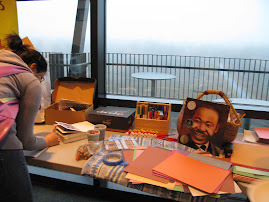
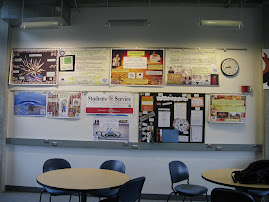
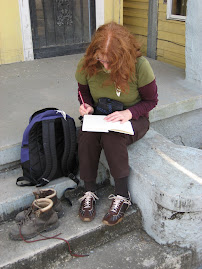


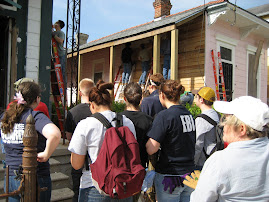
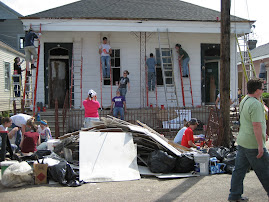
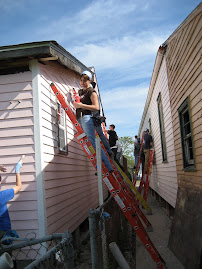


No comments:
Post a Comment